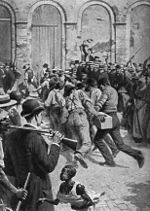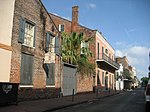Southern Railway Freight Office (New Orleans, Louisiana)

The Southern Railway Freight Office now more commonly known as Basin Street Station, in New Orleans, Louisiana, was constructed in 1904 by the Southern Railway at the corner of Basin Street and Saint Louis Street. The site was located just outside the original city in an area that was considered useless swampy land. The station was also used by the New Orleans Terminal Company. The railroad vacated the building in 1975 and it sat empty for many years. The Valentino Family purchased the building and began renovation in 2004. The front of the building retained station's 1904 classic architecture. The building now houses a visitor center, small museum, event venue, offices for their hotel business as well as several other tenants.
Excerpt from the Wikipedia article Southern Railway Freight Office (New Orleans, Louisiana) (License: CC BY-SA 3.0, Authors, Images).Southern Railway Freight Office (New Orleans, Louisiana)
Basin Street, New Orleans Storyville
Geographical coordinates (GPS) Address Phone number Website Nearby Places Show on map
Geographical coordinates (GPS)
| Latitude | Longitude |
|---|---|
| N 29.959722222222 ° | E -90.070833333333 ° |
Address
Basin Street Station (Welcome Center)
Basin Street 501
70112 New Orleans, Storyville
Louisiana, United States
Open on Google Maps











